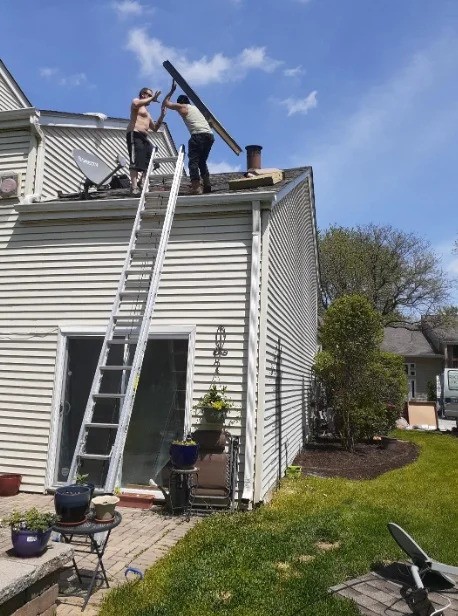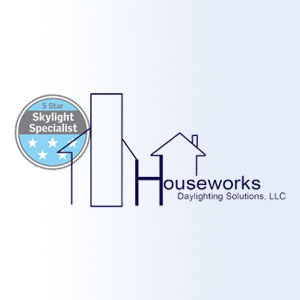New skylight installation in Chicago requires careful planning and expert execution to ensure long-lasting performance and compliance with local building codes.
As a homeowner in the Windy City, you'll want to work with experienced professionals who understand the unique challenges posed by our climate and can navigate the permit process smoothly.
In this guide, we'll cover everything you need to know about weatherproofing and code compliance for new skylight installation in Chicago.
Understanding Chicago's Climate and Skylight Installation Needs
Chicago's climate is known for its hot summers, cold winters, and frequent temperature swings.
These conditions can put significant stress on skylights, making proper sealing and weatherproofing essential.
Without adequate protection, skylights can develop leaks, drafts, or condensation issues that compromise your home's comfort and energy efficiency.
| Topic | Key Points |
|---|---|
| Chicago Climate | Hot summers, cold winters, frequent temperature swings |
| Weatherproofing | Essential for preventing leaks, drafts, and condensation issues |
| Building Codes & Permits | Navigating local regulations is crucial for compliance |
To address these concerns, professional installers use specialized flashing kits, sealants, and insulation materials designed to withstand harsh weather conditions.
They also follow best practices for integrating the skylight with your roof's existing drainage system to prevent water infiltration.

Expert team installs a new residential skylight on a two-story home
Navigating Chicago's Building Codes and Permit Requirements
Before installing a new skylight, it's important to familiarize yourself with Chicago's building codes and permit requirements.
The city has specific regulations governing the size, placement, and energy efficiency of skylights.
Failure to comply with these standards can result in costly fines or the need to redo the installation.
To obtain the necessary permits, you'll need to submit detailed plans and specifications to the Department of Buildings.
This process can be complex and time-consuming, so it's best to work with a licensed contractor who has experience navigating the bureaucracy.
They can ensure that your skylight installation meets all applicable codes and passes inspections the first time.
Selecting the Right Skylight Style and Material for Your Chicago Home
When choosing a skylight for your Chicago home, consider both style and material.
The most common styles are fixed (non-opening), vented (opening), and tubular.
Fixed skylights provide ample natural light but no ventilation, while vented models allow fresh air to circulate.
Tubular skylights are a good option for smaller spaces or areas with limited roof access.
In terms of materials, you can opt for glass or acrylic.
Glass offers superior clarity and durability but is heavier and more expensive.
Acrylic is lighter, more affordable, and less prone to shattering, but it may yellow or scratch over time.
| Style | Ventilation | Best For |
|---|---|---|
| Fixed | No | Maximum light, minimal air flow |
| Vented | Yes | Fresh air circulation |
| Tubular | No | Small spaces, limited roof access |
For Chicago homes, we generally recommend glass skylights with a low-E coating to maximize energy efficiency and minimize heat loss during our frigid winters.
Vented models are also a smart choice, as they allow you to take advantage of natural cooling during the summer months.
Ensuring Proper Sealing and Weatherproofing
Proper sealing and weatherproofing are critical for preventing leaks and moisture damage around your new skylight.
The installation process involves several key steps:
- Cutting a precise opening in the roof deck
- Installing a curb (raised frame) to support the skylight
- Securing the skylight to the curb with fasteners
- Applying a generous bead of silicone caulk around the perimeter
- Installing flashing to direct water away from the skylight
It's essential to use high-quality, flexible sealants that can withstand temperature fluctuations without cracking.
Avoid using rigid materials like mortar, which may fail over time.
Also, ensure that the flashing extends at least 4 inches up the sides of the curb and under each shingle course for maximum protection against leaks.
Costs and Benefits of Installing Skylights in Chicago
The cost of installing a new skylight in Chicago varies depending on size, style, material, and accessibility.
On average, expect to pay between $1,500 and $3,000 per unit, including materials and labor.
Larger or custom-designed skylights may cost significantly more.
Despite the upfront investment, skylights offer numerous long-term benefits:
- Reduced energy costs due to decreased reliance on artificial lighting
- Improved mood and productivity thanks to exposure to natural light
- Enhanced home value and curb appeal
- Potential tax credits or rebates for energy-efficient upgrades
Chicago homeowners who have installed skylights report feeling happier and more connected to the outdoors, even during the long winter months.
Many also enjoy lower electricity bills and a more cheerful atmosphere in their living spaces.

Bright living room with skylights, vaulted ceilings, and modern decor.
Why Proper Skylight Installation and Maintenance Is Crucial in Chicago
Given Chicago's harsh climate and strict building codes, it's imperative to hire qualified professionals for your skylight installation.
Poorly installed or maintained skylights can lead to a host of problems:
- Water leaks that damage insulation, drywall, and structural components
- Drafts that undermine your home's energy efficiency
- Condensation that encourages mold and mildew growth
- Code violations that result in fines or legal issues
By investing in proper installation and regular maintenance (such as annual inspections and re-caulking), you can avoid these pitfalls and enjoy your skylight's benefits for decades.
A well-installed skylight not only enhances your home's beauty and functionality but also protects your most valuable asset.
| Insight | Action Item |
|---|---|
| Weatherproofing is crucial in Chicago's climate | Choose a professional installer who uses high-quality materials |
| Building codes and permits are mandatory | Work with a licensed contractor to navigate the process |
| Proper installation and maintenance are essential | Schedule annual inspections and re-caulking to prevent issues |
Why We Think This is Important
At Houseworks Daylighting Solutions, we understand the challenges and rewards of installing skylights in Chicago homes.
With over 20 years of experience serving the Windy City, we've honed our expertise in weatherproofing, code compliance, and customer satisfaction.
Our team of certified installers uses only the highest-quality materials and follows industry best practices to ensure that your new skylight performs flawlessly for years to come.
We also handle all aspects of the permit process, so you can relax and enjoy your new source of natural light without any hassle.
If you're considering a new skylight installation in Chicago, trust the experts at Houseworks Daylighting Solutions to do the job right.
Contact us today to schedule a consultation and experience the difference that professional installation makes.
FAQs
How do you ensure proper sealing and weatherproofing for skylights in Chicago?
We use high-quality, flexible sealants and flashing materials designed to withstand Chicago's harsh climate. Our installers follow a meticulous process to integrate the skylight with your roof's drainage system and prevent leaks or drafts.
What are the building codes and permit requirements for skylight installation in Chicago?
Chicago has specific regulations governing skylight size, placement, and energy efficiency. We handle all aspects of the permit process, submitting detailed plans to the Department of Buildings and ensuring compliance with applicable codes.
Which skylight styles and materials are best suited for Chicago homes?
We recommend glass skylights with low-E coatings for energy efficiency, and vented models for natural cooling in summer. Acrylic is a lightweight, affordable option, but may degrade faster than glass.
How much does it cost to install a skylight in Chicago?
On average, expect to pay $1,500 to $3,000 per skylight, including materials and labor. Larger or custom designs may cost more. We provide detailed estimates based on your specific needs and roof configuration.
What are the benefits of installing a skylight in Chicago?
Skylights provide natural light, reducing energy costs and improving mood and productivity. They can also enhance your home's value, curb appeal, and connection to the outdoors, even during Chicago's long winters.

